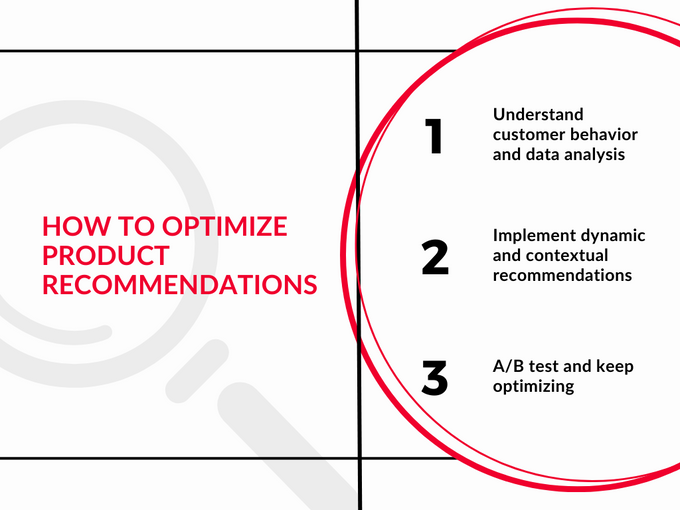How to Optimize Product Recommendations for eCommerce Merchandising
Updated October 7, 2024.

Product recommendations can have a big impact on your store's performance when they're done well. In fact, over 50% of your shoppers are more likely to return to your store if you offer them relevant product recommendations. This means you'll likely see benefits like increased sales, improved customer satisfaction, and enhanced user experience. Below, we look at how you can optimize product recommendations for eCommerce merchandising.
1. Understand Customer Behavior and Data Analysis
There's no way around it: to serve up the right product recommendations, you have to understand what your customers actually want. You need a thorough understanding of their wants, needs, likes, dislikes, and behaviors. This will help you make relevant and effective eCommerce product recommendations.
You can gather this data from several sources, including:
- browsing history
- purchase patterns
- customer preferences
- past customer behavior
It can become overwhelming to analyze multiple sets of data. That's why we recommend employing machine learning algorithms and AI to process vast amounts of data and generate accurate predictions.
2. Implement Dynamic and Contextual Recommendations
Context plays a huge role in a consumer's reactions to certain recommendations, and in turn their likelihood of making a purchase. Considerations like the customer's current session, location, and device can all play a role in helping you offer more relevant suggestions.
This is where dynamic product recommendations come in: they can adapt in real time based on user interactions and behavior.
By implementing contextual eCommerce product recommendations like "Frequently Bought Together" and "Recently Viewed", you can increase your likelihood of conversions and average order value (AOV). For example, Amazon features a Frequently Bought Together section with a standout yellow call-to-action button, allowing shoppers to add everything to their cart in one click.
3. A/B Test and Keep Optimizing
A/B testing is an excellent way to identify the most effective eCommerce product recommendation strategies.
In A/B testing, you use two different strategies at the same time, delivering each one randomly to half of your audience.
This way, you can see which one performs better. Once you do find what works, remember that it won't work forever. The digital world is constantly changing, and you'll need to adapt with it:
- Regularly evaluate and refine your recommendation algorithms to keep up with changing customer preferences.
- Collaborate with your marketing and data analysis teams to monitor performance and implement improvements.
» Delve deeper into the inner workings of A/B testing
Enhancing the eCommerce Journey With Personalized Recommendations
Product recommendations can be an amazing addition to your eCommerce merchandising strategy. When you truly understand your customers, implement contextual and dynamic recommendations, A/B test, and continuously optimize, you're setting your brand up for success. Invest in optimizing your product recommendation systems to improve customer engagement, boost conversions, and ultimately elevate the overall shopping experience.
» Find out why product recommendations also need merchandising rules






